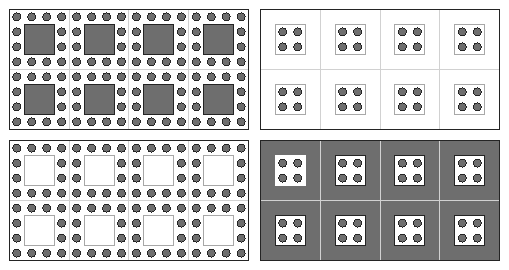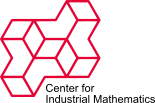Modelling and Analyis of Periodic Media with Lower-Dimensional Structures
| Working Group: | Former WG Modelling and PDEs |
| Leadership: | Prof. Dr. Michael Böhm (E-Mail: mbohm@math.uni-bremen.de ) |
| Processor: | Dr. Sören Dobberschütz |
| Funding: | Zentrale Forschungsförderung der Universität Bremen |
| Project partner: | |
| Time period: | since 01.11.2009 |
 In a lot of chemical, biological and mechanical systems, one has to deal with processes on different "scales". Here the term scale might refer to at least two entities: On the one hand, one might have to deal with objects of different "measurement" scales, like length; on the other hand, one can also have a situation where processes happen at different dimensions, for example on surfaces or at interfaces. We give two examples:
In a lot of chemical, biological and mechanical systems, one has to deal with processes on different "scales". Here the term scale might refer to at least two entities: On the one hand, one might have to deal with objects of different "measurement" scales, like length; on the other hand, one can also have a situation where processes happen at different dimensions, for example on surfaces or at interfaces. We give two examples:
- Marine aggregates are particles found in the pelagic zone of the oceans. They consist of detritus, dead material, living organisms and inorganic matter, for example clay minerals. Due to the sinking of these aggregates to the seabed, a constant transportation process of chemical and biological material to the sea~floor is maintained. It is conjectured that this is one of the main processes driving vertical fluxes in the ocean. Since the size of one aggregate is small compared to the size of the ocean, we are dealing with different length scales.
- Detergents are one example of so called surface active agents. In the usual modelling of these agents, they influence properties and processes at lower-dimensional structures in the domain of interest. Thus in this situation we have different dimensional "scales".
In this work, we try to develop techniques and tools to effectively model and analyse reaction-diffusion processes at the above mentioned scales. This is done in the framework of periodic homogenisation. This way we can obtain effective material properties, which (hopefully) facilitate calculations for real live processes.

